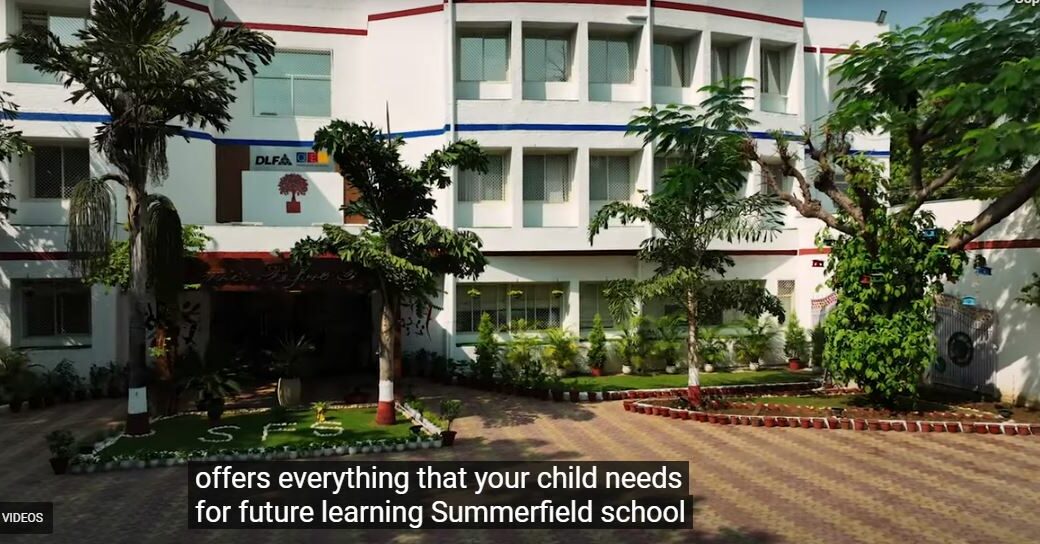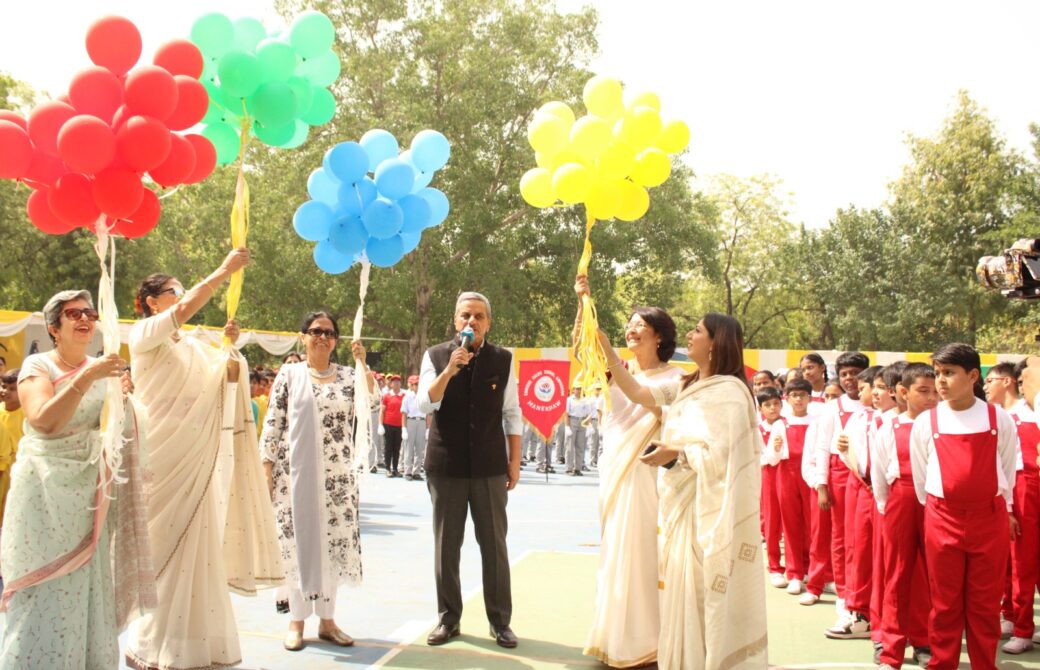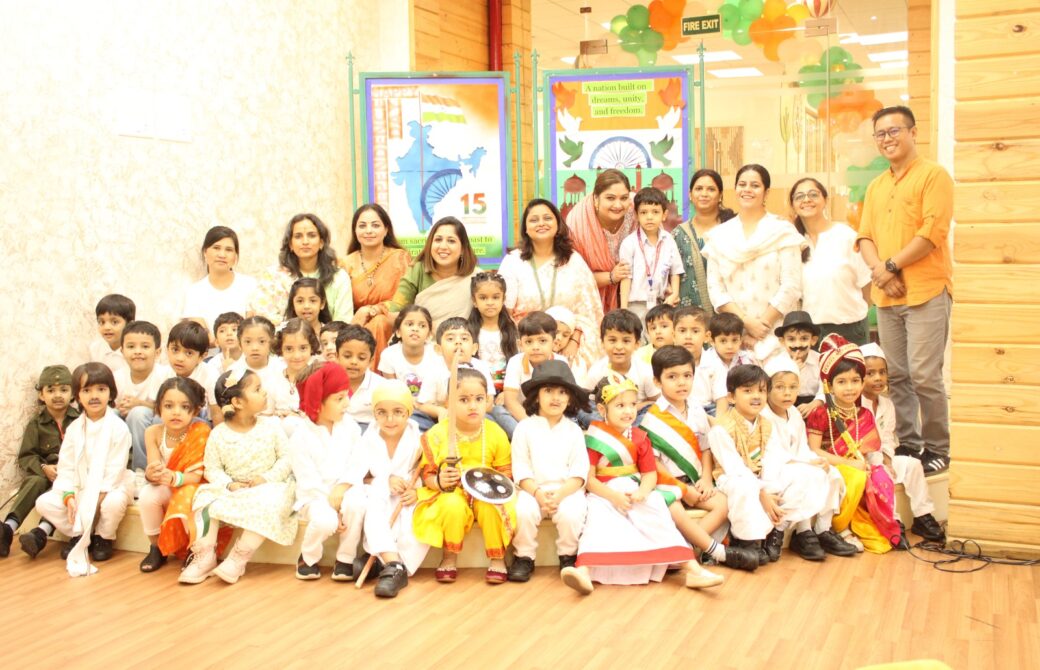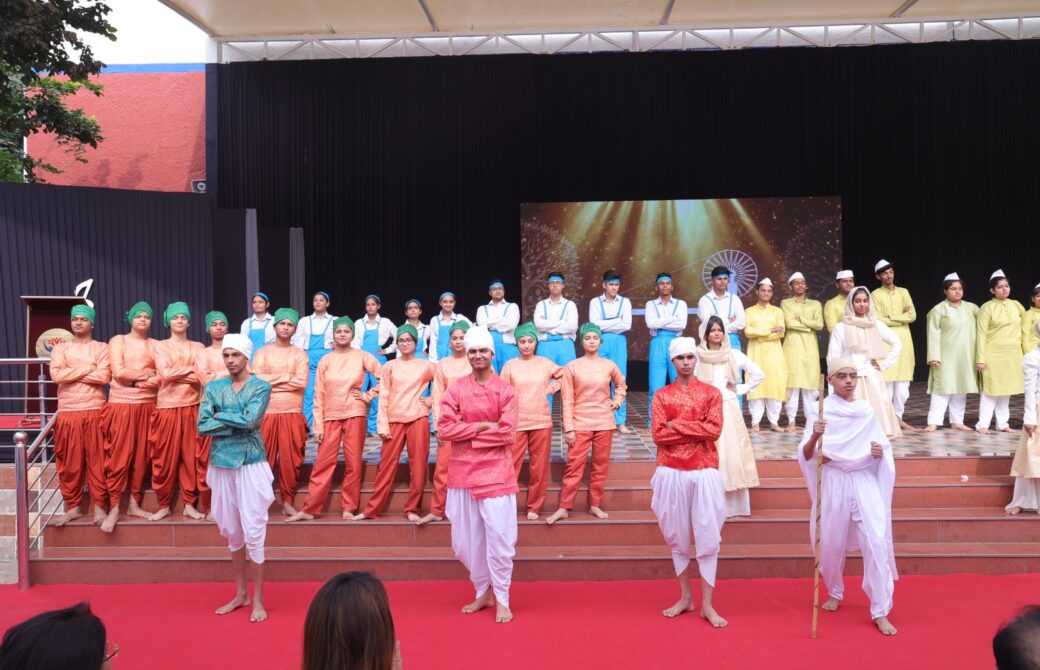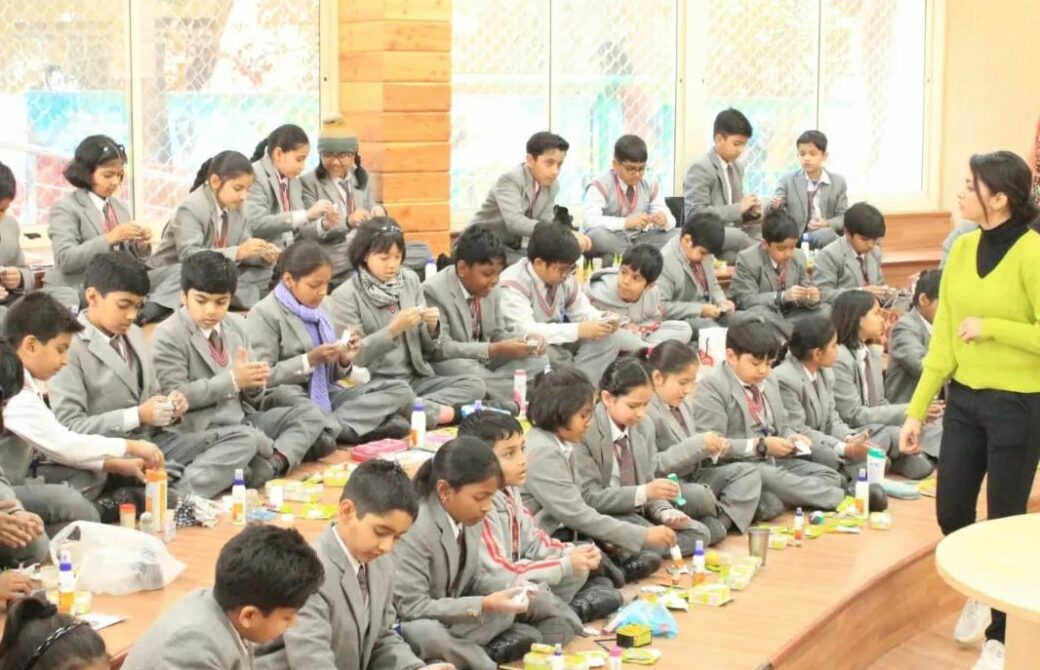Introduction:
Education today extends far beyond academics. It’s no longer sufficient for schools to focus solely on grades and examinations. At Summer Fields School Gurugram, the Good CBSE Schools in Gurgaon where it truly stands out share one defining trait — a strong emphasis on co-curricular programs that foster intellectual, social, emotional, and physical growth. These opportunities form the foundation of a well-rounded education, helping children develop essential life skills, confidence, and character alongside academic achievement.
Holistic education means preparing students not only for college but for life itself. From arts and sports to leadership clubs and community service, co-curricular activities nurture creativity, resilience, and teamwork — qualities that are vital in shaping tomorrow’s leaders.
About Us:
At Summer Fields School, co-curricular opportunities are not extras — they are essentials. We offer a vibrant mix of clubs and activities: visual & performing arts, languages, robotics, environmental & wellness clubs, cookery, gardening, science & math clubs, and a wealth of sports including skating and athletics. Our House system, inter-club competitions, exhibitions, and workshops give students chances to explore, present, invent, and lead. We host regular events like Book Week, Art Exhibitions, and Activity Weeks that engage the whole school in creative learning. With a student-centred pedagogy and smaller class sizes, each learner is encouraged to try, grow, and shine in areas beyond textbooks. Here, we believe a well-rounded education means nurturing skills, passion, character, and intellect alike.
The Meaning and Importance of Co-Curricular Activities
Co-curricular activities are educational experiences that complement academic learning. They include everything from sports and performing arts to robotics clubs, debate teams, environmental projects, and leadership forums.
Unlike extracurricular activities that are purely optional, co-curricular programs are integrated into the learning ecosystem, offering students a balanced platform to explore and express their talents.
These programs:
- Encourage creativity and innovation
- Improve social and emotional intelligence
- Build self-discipline and leadership
- Foster teamwork and communication
- Enhance academic engagement and motivation
In short, they help students discover who they are — and what they can become.
Why a Well-Rounded Education Matters
Modern education isn’t just about producing high scorers; it’s about nurturing capable, compassionate, and confident individuals. A well-rounded education provides equal emphasis on academics, life skills, physical health, and creative development.
When students engage in diverse activities, they learn to manage time, handle responsibility, and interact meaningfully with others. Such experiences lay the groundwork for success in university, career, and beyond.
The CBSE schools known for excellence integrates co-curricular learning as part of their core philosophy — ensuring that every student receives opportunities to grow intellectually and emotionally.
Key Co-Curricular Opportunities That Enrich Student Life
A well-designed co-curricular program exposes students to multiple domains of learning. Let’s explore some of the most valuable opportunities that shape a complete education experience.
1. Performing Arts: Expression Through Creativity
Music, dance, and drama help students develop emotional expression, rhythm, and self-confidence. Performing arts teach them to channel their emotions productively while improving concentration and coordination.
Whether participating in school plays, choir groups, or dance competitions, students gain the ability to perform fearlessly before audiences — a skill that enhances confidence in both academic and social environments.
Benefits:
- Builds confidence and stage presence
- Enhances memory and coordination
- Promotes teamwork through group performances
- Encourages appreciation of cultural diversity
2. Visual Arts and Design: Nurturing the Creative Mind
Art and design programs cultivate imagination and critical thinking. Through painting, sculpture, graphic design, and photography, students learn to interpret the world creatively.
In a world driven by innovation and aesthetics, visual literacy is as important as textual literacy. Exposure to fine arts also improves focus and patience, helping students approach problems from unique perspectives.
Benefits:
- Stimulates creativity and originality
- Develops fine motor skills and precision
- Builds patience and discipline
- Enhances appreciation for aesthetics and culture
3. Sports and Physical Education: Building Character and Strength
Sports form an integral part of a well-rounded curriculum. Athletics, football, swimming, badminton, and martial arts develop physical fitness, endurance, and teamwork.
Physical activity also boosts cognitive function, helping students stay alert and focused in classrooms. More importantly, it teaches life lessons in discipline, perseverance, and leadership — lessons that transcend the playing field.
Benefits:
- Promotes physical and mental health
- Instills discipline and time management
- Teaches teamwork and leadership
- Builds resilience and competitive spirit
4. Debating and Public Speaking: Empowering the Voice
Debate clubs and elocution contests enhance communication skills, analytical thinking, and confidence. Students learn to structure their thoughts, articulate clearly, and present their opinions respectfully — skills essential for leadership and success.
Public speaking also encourages awareness of global issues, allowing students to become informed and responsible citizens.
Benefits:
- Improves articulation and confidence
- Develops reasoning and critical thinking
- Enhances awareness of current affairs
- Encourages respectful discussion and tolerance
5. STEM and Robotics Clubs: Fostering Innovation and Inquiry
Technology-driven activities like robotics, coding, and science clubs promote problem-solving and innovation. Students learn how theoretical knowledge applies in real life, bridging the gap between textbook concepts and practical understanding.
Through hands-on learning and collaboration, they gain exposure to emerging fields like artificial intelligence, automation, and engineering design.
Benefits:
- Encourages scientific curiosity
- Promotes teamwork and creativity
- Builds computational and analytical skills
- Prepares students for future tech-driven careers
6. Literary and Reading Programs: Strengthening the Mind
Reading clubs, creative writing workshops, and storytelling sessions help students develop linguistic skills and imagination. Writing poetry or essays improves expression, while group reading fosters empathy and comprehension.
Such programs also cultivate a lifelong love for literature, helping students become articulate and thoughtful communicators.
Benefits:
- Enhances vocabulary and comprehension
- Stimulates imagination and empathy
- Encourages reflective and critical thinking
- Builds self-expression and writing ability
7. Community Service and Social Outreach: Teaching Empathy
True education includes social awareness. Volunteering activities and social outreach programs help students understand real-world challenges and contribute positively to society.
By engaging in drives for cleanliness, environmental awareness, or social welfare, students develop compassion, civic responsibility, and gratitude.
Benefits:
- Builds empathy and leadership
- Encourages civic sense and responsibility
- Promotes teamwork and cooperation
- Inspires lifelong community engagement
8. Environmental and Sustainability Clubs
With global environmental challenges on the rise, schools are emphasizing sustainability education. Eco-clubs engage students in tree plantation drives, waste management initiatives, and awareness campaigns.
Such experiences build ecological consciousness and inspire eco-friendly behavior — an essential trait for future global citizens.
Benefits:
- Encourages responsibility toward the planet
- Builds awareness of sustainability practices
- Fosters collaboration on environmental projects
- Teaches innovation in solving ecological issues
9. Student Councils and Leadership Forums
Leadership programs allow students to experience democratic processes, decision-making, and responsibility firsthand. Being part of a student council teaches accountability, organization, and negotiation.
These experiences foster confidence, preparing students for future leadership roles in academics, business, and society.
Benefits:
- Builds organizational and leadership skills
- Teaches responsibility and teamwork
- Enhances communication and initiative
- Encourages ethical leadership and collaboration
10. Cultural and International Exposure
Cultural exchange programs, Model United Nations (MUN), and global collaborations expose students to international perspectives. Such experiences promote inclusivity, cultural understanding, and global competence.
Students learn to appreciate diversity, build friendships across borders, and develop respect for different traditions and viewpoints.
Benefits:
- Encourages cultural appreciation
- Enhances global awareness
- Develops confidence in cross-cultural communication
- Promotes adaptability and empathy
Integrating Co-Curricular Learning into Academic Life
A strong education system doesn’t treat co-curricular activities as optional extras—it integrates them seamlessly with academics. Teachers design lesson plans that connect subjects to creative and practical experiences.
For example:
- Mathematics meets art through design projects.
- Literature comes alive through theater performances.
- Environmental science becomes hands-on through gardening and sustainability initiatives.
This approach transforms learning into an engaging and holistic experience.
The Role of Teachers and Mentors in Co-Curricular Growth
Behind every successful co-curricular program is a team of dedicated mentors who identify potential and nurture talent. Teachers play a dual role — academic guides and life coaches. They help students balance academics with activities, ensuring that participation enhances learning rather than distracts from it.
Mentors encourage exploration, celebrate effort, and help students reflect on their experiences. Through personalized guidance, they help children discover their unique strengths.
Balancing Academics and Co-Curricular Activities
One of the most common concerns for parents is whether co-curricular engagement might affect academic performance. However, research consistently shows the opposite. Students involved in balanced extracurricular programs often perform better academically.
This is because activities enhance focus, relieve stress, and teach time management. Schools that maintain an integrated schedule ensure that students excel in both domains without feeling overwhelmed.
Parent Involvement in Co-Curricular Education
Parents play a crucial role in encouraging participation. When families value experiences beyond marks, children feel more confident exploring new areas. Regular events like talent showcases, exhibitions, and sports days offer parents the chance to witness their child’s growth beyond the classroom.
Schools that communicate openly with families about co-curricular goals create stronger partnerships and better outcomes for students.
How Co-Curricular Exposure Builds Lifelong Skills
Each co-curricular domain contributes to essential 21st-century skills:
- Critical thinking and creativity – through arts, design, and problem-solving clubs.
- Collaboration and communication – through sports, leadership, and performance activities.
- Adaptability and resilience – by facing new challenges and competitions.
- Empathy and cultural intelligence – through community and cultural engagement.
These skills are now as important as academic proficiency, forming the true pillars of future success.
Evaluating a School’s Co-Curricular Strength
When reviewing the CBSE schools, parents should look for certain key indicators of strong co-curricular integration:
- Diversity of Offerings – A range of activities across arts, sports, and innovation.
- Qualified Mentors – Coaches, artists, and educators trained in holistic development.
- Infrastructure – Facilities like auditoriums, sports grounds, art studios, and labs.
- Recognition and Competitions – Platforms for students to showcase and refine talents.
- Inclusivity – Equal opportunities for all students, regardless of background or ability.
These features reflect a school’s commitment to nurturing balanced individuals prepared for the complexities of the modern world.
Impact on Higher Education and Career Readiness
Universities and employers increasingly value candidates who demonstrate creativity, leadership, and teamwork. Participation in co-curricular activities highlights a student’s initiative, versatility, and interpersonal skills — often becoming a differentiating factor in admissions and job interviews.
A student who has led a community project or captained a sports team carries lessons in collaboration, ethics, and problem-solving that academic records alone cannot show.
Creating Lifelong Learners Through Co-Curricular Learning
True learning never stops. When schools create an environment that encourages curiosity and exploration, students carry that mindset for life. Co-curricular engagement nurtures intrinsic motivation — the drive to learn and improve not for marks, but for personal satisfaction and purpose.
This intrinsic motivation is what sets apart passionate, self-driven individuals who continue to grow long after they leave school.
Conclusion:
A well-rounded education is not defined by exam scores but by the development of balanced, confident, and empathetic individuals. At Summer Fields School Gurugram, the Top CBSE Schools in Gurgaon where it is known for excellence, understand that co-curricular opportunities are not an addition but a necessity in modern education.
Through music, art, debate, leadership, and community service, students learn to lead with heart and think with imagination. These experiences shape not just successful learners, but responsible citizens and compassionate humans ready to contribute to a global society.
In the end, co-curricular opportunities are more than activities — they are stepping stones to lifelong growth, self-discovery, and purpose.
FAQs:
Q. 1 What defines a well-rounded education today?
Ans : A well-rounded education blends academics with arts, sports, and skill-based programs to develop intellectual, emotional, and social intelligence in students.
Q. 2 Why are co-curricular activities vital in CBSE schools?
Ans : They nurture creativity, teamwork, and leadership, ensuring students learn practical life skills along with academic excellence.
Q. 3 How can parents identify schools that offer strong co-curricular opportunities?
Ans : Parents should look for clubs, cultural events, sports facilities, and innovation labs that encourage participation and experiential learning.
Q. 4 How do co-curricular programs impact student confidence?
Ans : Such programs give students platforms to express ideas, face audiences, and collaborate — building self-assurance and communication skills.
Q. 5 What is the link between co-curricular activities and academic performance?
Ans : Engagement in creative and physical pursuits boosts focus, reduces stress, and enhances problem-solving — leading to improved academic outcomes.
Q. 6 Why do schools from the list of CBSE schools emphasize co-curricular development?
Ans : Because holistic education ensures students emerge as confident, versatile, and socially aware individuals ready for real-world challenges.


